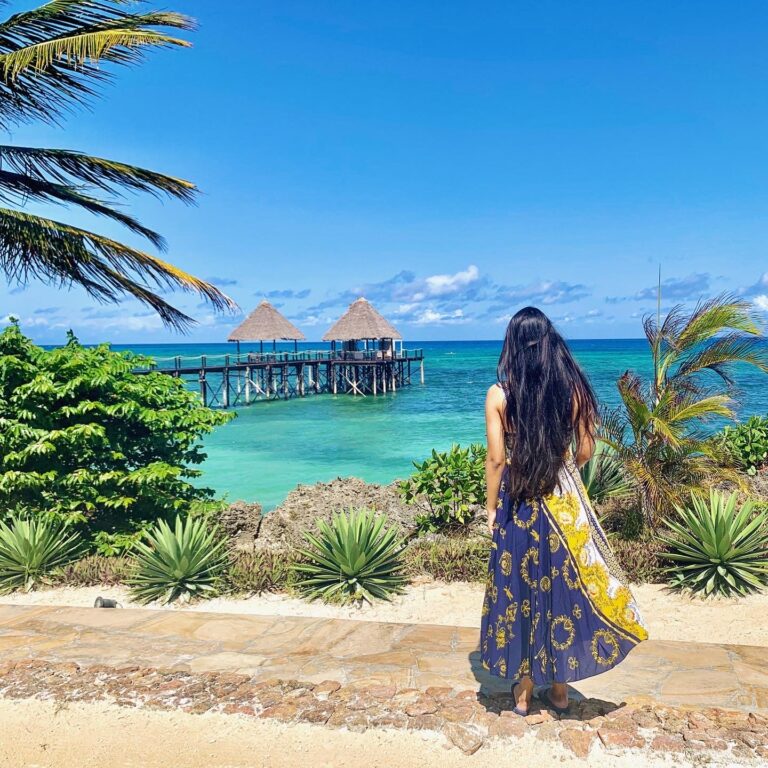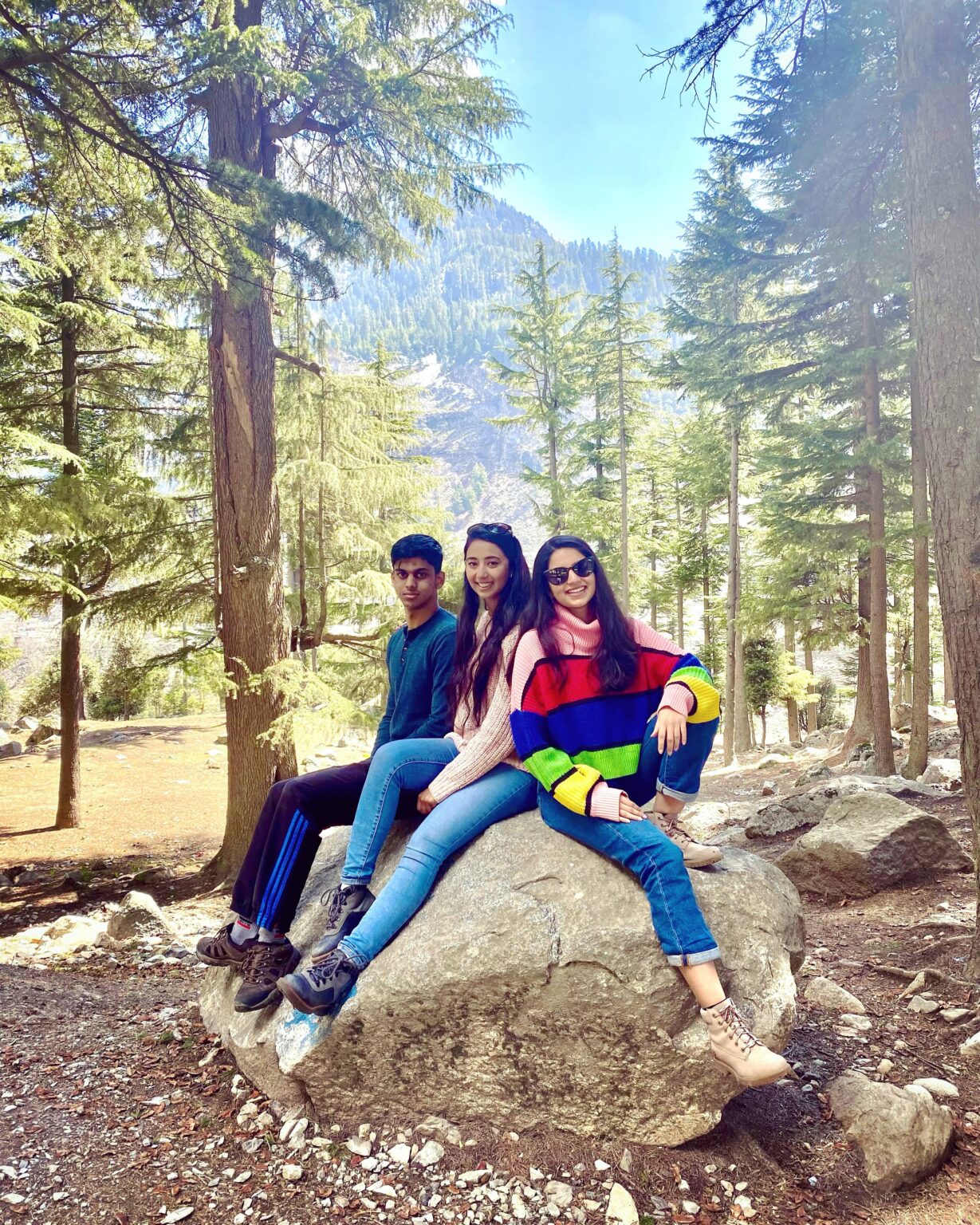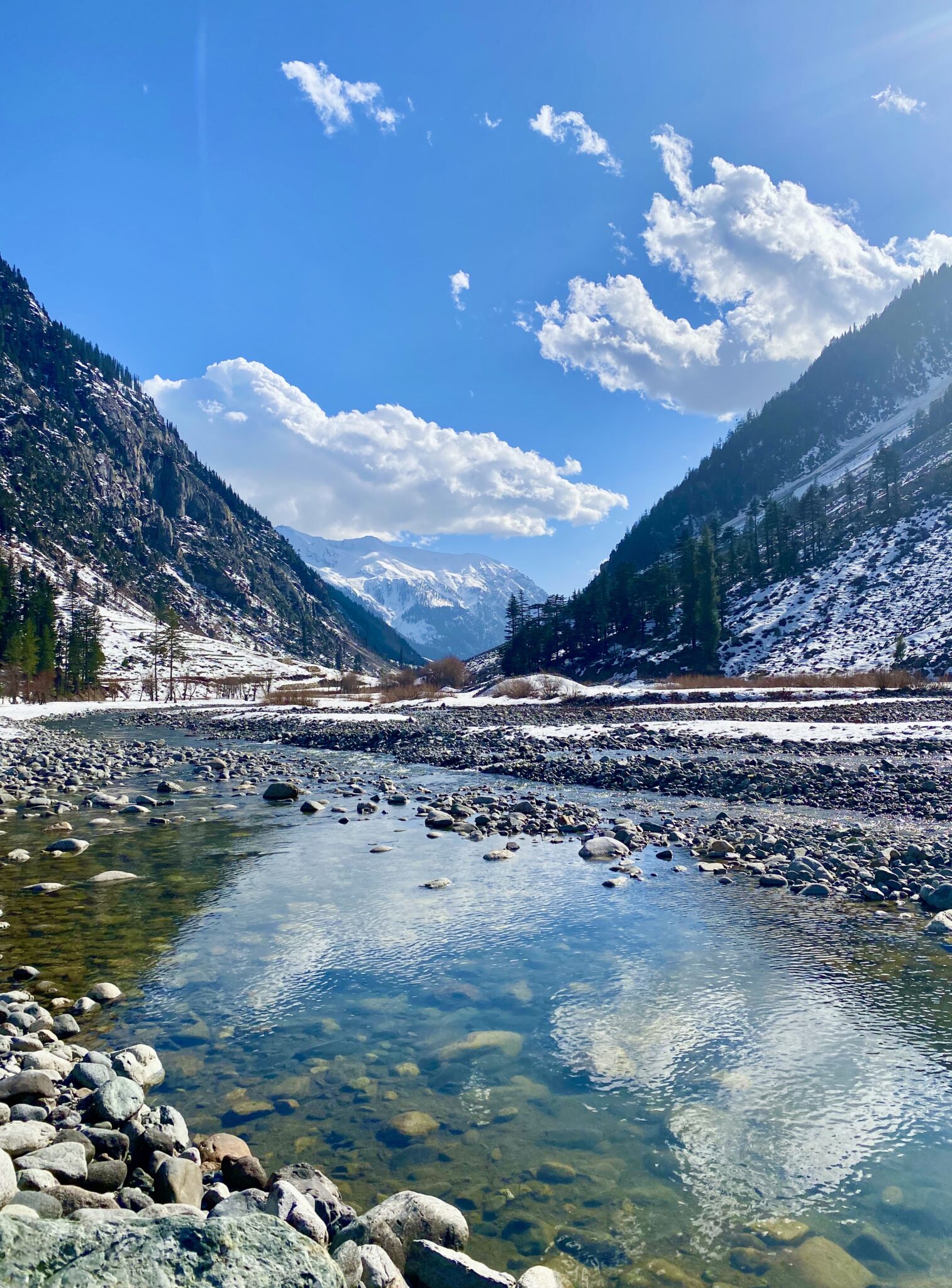Nature is the best Medicine
The restorative impact of the green trees and the blue seas on the mind, brain and body
There is just something about nature. The symphony of birds singing as the daybreaks, to the morning dew and the fresh mist. As the sun emerges further out of its hiding place to travel higher and bolder into sky, the afternoon brings with it a warmth and welcoming embrace. Your back garden is transformed into an impromptu sauna; the sunshine smiles upon your trees, pets, blue skies and the sea. The children run down the street for ice cream and just like that, before you know it, a balmy evening wraps it sheet around us, cocooning us into land of utter bliss.
But as we leave the summer into October, the autumn glory brings with it a dazzling kaleidoscope. The greens dissolve to a technicolour of oranges, reds and yellows. A chill caresses the landscape and you begin to get the first goosebumps of Christmas anticipation. London’s Regent Street lights up with angels and the cosy scarves and gloves are adorned on each of your loved ones. Warmed drinks and bonfires, Christmas markets and carols pop-up around the city as winter frenzy engulfs the city. There is so much to do, so many people to meet, so much food to eat! But then comes a lull and you wait for the world to rewarm, the flowers to spring, the spring bringing bounties of joy and bouncing with brightness and energy to start the annual cycle again.

Year on year, nature brings with it four seasons to enjoy – each with its unique perks and satisfaction. Yes, some of our summer people, others are winter people while my mum herself is a through and through autumn gal. Some like the warmth, others like the cold. But do we really bask in the outdoors as the seasons drift by? To most of us, life is the same every day. We wake up, we work, we finish work, we get home. Of course, there are dinners out with friends, gym sessions for people not like me, or weekend spa trips for people more like me. There are shopping trips with your sister, date nights in with your partner. There are concerts and musicals. My current favourite is theatre days outs in London’s West End watching Narnia, the Lion King or Frozen, and feeling your head sway side to side to side in beat with the music. These are social outlets, you have fun, your life is full. But is it? All these activities have a common undertone: Indoors.
As a society, we are losing touch with the wet soil and the blue skies. Nature and the outdoors are getting replaced with technology, gadgets and flashy offices. This is all new, this is not the world our forefathers knew. For the first time as recently as 2008, our species crossed a significant habitat milestone so that the majority of us were living in cities. Our ancestors spent 99.9% of their time in nature: those who survived to pass on their genes were in tune with it, they were cued to it. They had to find the best places for food, pick the best sticks and wood for shelter and avoid and escape predators – all of which meant you had to be in rhythm with Mother Earth. No wonder our affinity to nature persists even today in the most unlikely places. We still yearn for a holiday villa on the sea and buy flower bouquets on birthdays and anniversaries. Apple, one of the largest tech companies uses a fruit for its name and logo. Its desktop background is always an enrapturing yet serene landscape. Apple software names ranges from Mountain Lion to Yosemite to Catalina –after noble predators to renowned national parks to beguiling coastal surfing towns. Coincidence?
When cinemas, spotlights and screens didn’t exist, there was always the sunset. There is something romantic and comforting about nature. My best moments, which are suffused with peace and tranquility, have been borne out of nature. Chai and Pakore (asian deep-fried snacks) amongst the northern mountain ranges of Pakistan, to swinging in hammocks on a beach in Zanzibar. Listening to waves lap up the sand on a terrace in my seafront Airbnb in Mallorca to a walking trail amongst the forest. But very rarely can I say I am surrounded by raw scenery in my day-to-day life. It’s mainly concrete, buildings and white-washed walls of the hospital. Outdoor relaxation for me and most people is an active effort, a vacation or a staycation. Our ancestors lived within nature. Now, our life is punctuated by short-lived experiences of nature during the week or weekend booked off for a holiday – brief and infrequent during the year.
So, what are the implications of the human race losing touch with its natural habitat. We evolved with it, surely it serves a greater function than just looking pretty? And it does. Biophilia is the human’s natural need to immersed in nature. Spending time in nature can act as a balm to our busy brains. Nature is woven into our physiology, immune system and neural networks – and as the gulf between our world and body systems widen, we are nearing trouble. We are losing one of the best medicine life has equipped us with.


The restorative impact of the green trees and blue seas on the mind, brain and body:
Nature Decreases Stress
Our ‘autonomic nervous system (ANS) is exactly what the name suggests – its autonomous, it governs itself without any conscious thought process required from our part. The body functions it controls include respiration, digestion your heart rate, blood pressure, temperature etc. You don’t consciously decide that “Today, I fancy having a BP of 120/80 with a heart rate of 60.” – No, your body or the ‘autonomic nervous system (ANS)’ just does its own thing when setting these parameters.
There are two yin and yang divisions of the ANS. The ‘sympathetic nervous system’ which regulates your ‘fight and flight’ response. This is when you have adrenaline coursing through your veins, your heart rate increases, and your blood pressure rises as you make a run for train about to leave the platform. The second division is the ‘parasympathetic nervous system’ – this is the ‘rest and digest’ branch. It slows down the heart, stimulates the salivary glands and encourages other ‘relaxation responses’ to buffer periods of high stress.
Miyazki, an award-winning university professor, researcher and the deputy director of Chiba University’s Centre for Environment, published a review on the physiological effects of forest therapy. He found that the body’s response to a walk in the woods compared to that of urban walks. They found a significant decrease in the stress hormone cortisol, a reduction in blood pressure and heart rate. Just 15-minute forest therapy session can induce the body into a state of physiological relaxation. Miyazki didn’t just stop there and went to evaluate psychological responses via a questionnaire. The participants who went on nature walks reported better moods and lowered anxiety.
A research by Berg and colleagues used ECGs (heart monitoring traces) to show that stress levels were lowered in participants who viewed natural green images compared to built-up urban spaces. They also found that participants who viewed a scenic view prior to being exposed to a stressor had enhanced recovery and hence, were better able to handle the stressor.
These “positive vibe” findings associated with nature are supported by MRI scans of the brain. One Dutch study showed that when viewing pictures of nature, blood flows to parts of the brain called the insula and the anterior cingulate which are associated with pleasure, empathy and unconstrained thinking. In contrast, when viewing urban pictures, blood flowed to the amygdala, a brain centre which registers fear and anxiety. Crazy what nature can do, huh?
Nature Improves Memory, Attention and Decision-making
You need your memory to survive. Our ancestors needed to remember where food sources were so they could make their way back to it, remember what constitutes danger and who are our friends. We are a society which functions as a unit, a pack, a tribe. A study from the University of Michigan showed that there was a 20% boost in memory performance of participants following a walk within nature compared to a busy street– regardless of the temperature. A similar trend was also noted when looking at pictures of natural scenes vs urban environments, but the difference was not pronounced.
Nature’s impressive invigorating power extends beyond memory to ‘executive function’. Executive function is a fancy umbrella term used to describe complex or “higher-order” brain functions. These are carried out by the walnut looking folds of the brain called the ‘the neocortex’ or the ‘new brain’. Examples of these brain functions include attention, reasoning, judgement, and decision-making. These better we are at these skills, the better our survival advantage
In her book “Nature Fix”, Florence Williams quotes Paul Atchley, a professor of Psychology at the University of Florida – “Attention is everything. Without it, we don’t seem hear or taste. Your brain keeps track of about four things at once. How do you prioritise what’s important and what’s not? Through inhibition. Most connections in the brains are inhibitory functions. We have far more information that we can deal with. Most of what the brains is doing is filtering, running stuff out so we can focus on what is relevant. Because of this interplay of observations, selective attention and inhibition, humans were able to achieve high order cognition which includes creative problem solving, goal following, planning and multi-tasking.”
This pivotal role of nature within attention is not a new concept– Frederick Law Olmsted, an American landscape architect described the phenomenon in 1865. He argues that “the enjoyment of scenery employs the mind without fatigue and yet exercises it; tranquilizes it and yet enlivens it; and thus, through the influence of the mind over the body, gives the effect of refreshing rest and reinvigoration to the whole system.” So how does nature do this? This can be explained by something called Attention Restoration Theory. Kaplan & Kaplan suggest that mental fatigue and concentration can be improved by time spent in or looking at nature. When you watch the sunset or the rain, your brain rests. It is called ‘soft fascination.’ The more therapeutic landscapes are the ones that hit the sweet sport of being interesting but not too interesting – in other words, they should entice our attention but not demand it
What nature is doing here is narrowing our choices. With fewer choices, the attention system works better for more complex things. In the office, you’ve got emails, alerts and notification. In the hospital you have the beeping cardiac monitor, emergency buzzers and those goddamn bleeps. Withing a natural environment, the filtering requirements are less demanding thus enhancing your capacity to focus on deeper thought, creativity, and problem solving.
This effect of nature on executive function has been tested in multiple studies. For example, Australian researchers led by Lee and colleagues asked students to engage in a dull, attention-draining task in which they had to press a computer key when certain numbers flashed on a screen. Students who looked out at a flowering green roof for 40 seconds midway through the task made significantly fewer mistakes than students who paused for 40 seconds to gaze at a concrete rooftop.
Nature Promotes Physical Health and Aids Recovery
If you read my post on “Life in Cardiac Surgery ICU”, I have always wondered if there was any impact of having a beautiful river Thames and Big Ben view from the ward window on patient recovery. Turns out nature really does heal. A popular study by Ulrich evaluated two groups of patients in in a Pennsylvania hospital who underwent gallbladder surgery: one group had a window view of nature (trees) and the other had a view of a brick wall. Those with the nature view had shorter hospital stays, had a reduced need for strong pain killers and received more favourable comments about their condition in nursing notes.
This also goes for patients in the intensive care unit (ICU) who are sedated – one can argue, why should a beautiful surrounding have an impact when ICU patients are too sick to appreciate it? But it does. Keep’s study demonstrated that patients who received care in a windowless ICU were less well orientated and twice as likely to develop hallucinations and delusions compared to those without who were nursed in areas with windows.
Nature Boosts the Immune System
Our immune system is made up multiple different types of cells. Most of us know our red blood cells are to do with haemoglobin and the body’s oxygen carrying capacity, and the white blood cell are the ones which fight infection. These white blood cells have many different subtypes – broadly speaking neutrophils for bacterial infection, lymphocytes for viral infections and eosinophils for parasitic infections. Dr Qing Li, an immunologist and the president of the Japanese society for forest medicine has studied the effect of nature on mood and stress as manifested by the immune system. He studied the “Natural Killer (NK) Cells.” It’s a type of cell within the immune system that sends out self-destruct messages to tumour and virus infected cells – essentially, they help you fight infections and cancer so are pretty handy to have around. In his experiment he took a bunch of middle-aged businessmen for a morning hike in the woods for 3 days straight. He found that there was a 40% increase in NK cells compared to those on urban walks!! What’s more is that these changes persistent 1 month on where the counts are still 15% higher. Who knew walking in nature can help your body produce more infection fighting cells?
So how does nature do this remarkable feat? Li thought it was to do with phytoncides – it’s like pheromones but for plants. These are essential oils emitted by evergreens, plants and trees. Li thought that by inhaling these plant “phytonicides” one can boost immunity by increasing NK cells. To test this, he locked participants in hotel rooms for three nights. One group had humidified stem oil from hinki cypress trees, the other had vaporised nothing. The result showed that the cypress sleepers had a 20% increase in NK cells and also reported feeling less fatigued. The control group showed zero difference.
Turns out the nose-brain axis might actually serve a higher purpose that just the pleasure of smelling a flower a bed or a tasty curry? Nature entices multiple senses and exerts its healing powers through multiple avenues. However, there is a chance that with us now living in urbanised surroundings, this direct pathway from the nose to the brain is doing more harm than good. We live amongst traffic, pollution, black carbon from exhausts and combustion all of which are responsible for premature deaths. But the use of aromatherapy for traditional healing dates to many moons ago – the ancient Greeks used to blend incense for both medicinal and cosmetic purposes. That probably why even today we take pleasure out of these calming fragrances. I always knew there was a reason why a NEOM sleep pod with a lavender oil sleep diffuser always stands at my bedside table.
Final Words….
Our life has become infused with technology and digitalisation. Globalisation has decreased out connectedness with nature. With daily doses of the environment gone, we are increasingly being burdened by chronic ‘indooritis’ ailments – from Vitamin D deficiency to obesity, depression and anxiety. There is increasing near-sightedness or “myopia.” Traditionally, we may have associated near sightedness to book reading or television watching. But turns out, its time spent away from daylight that is the bigger problem. The sun primes the retina’s dopamine receptor and those in turn controls the shape of the developing eye. When I was up in the mountains of rural Pakistan, I saw three-, four- and five-year-old kids run up and down the slopes in their play, a fitness which us urbanised young adults can only dream of. We are less rejuvenated, less creative, less empathetic without nature.
I guess, there is a lot left to still discover. It’s a mammoth task to figure out the effect of something as wonderfully complex as nature on something as wonderfully complex as the brain. It appears that our holiday doses of nature are not enough to realise its full health benefits. We need more of it, as part of our daily lives – bigger windows, landscape posters, urban oases of greenery, outdoor classrooms and compulsory lie-on-the grass sessions for every working adult!
Related Posts:
Check out my post on what life is like in one of the most scenic ICUs in London!
Wonderful writing about impact of nature for improvement of our physical and mental health.
She relates the nature ‘ s advantages in very scientific way. I am very impress with her quotes.
I read her passages number of times to get encourage to go out to enjoy God Gifted treasures (natures) on daily bases to keep myself fit, happy and healthy.